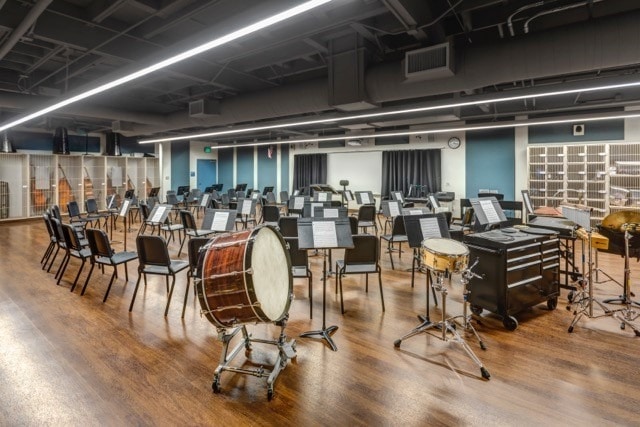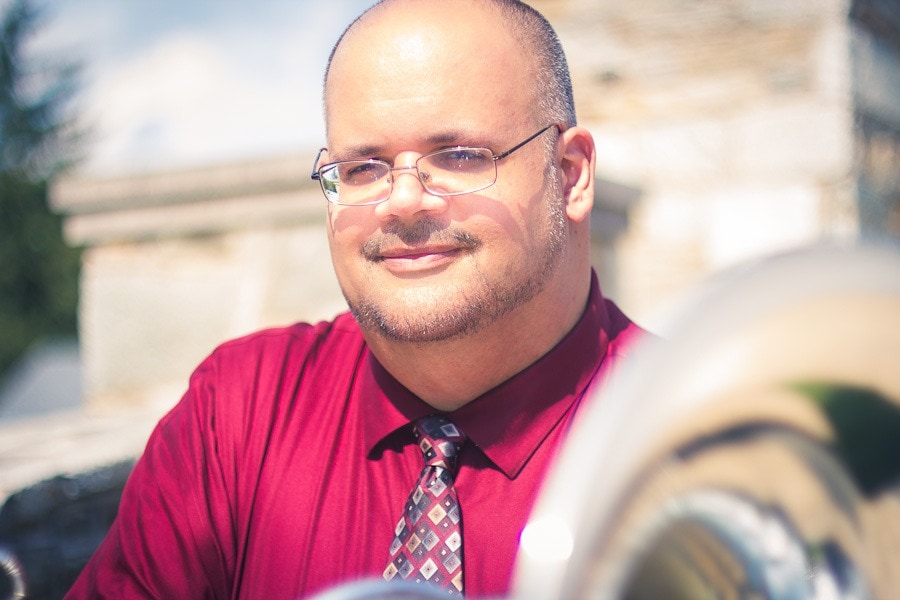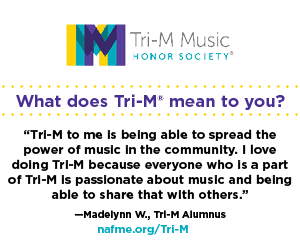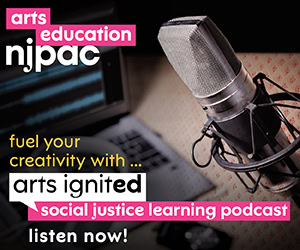NAfME BLOG
Now Is the Time! Music Education “Challenges” Core Curricula for First Chair

/ News Posts / Now Is the Time! Music Education “Challenges” Core Curricula for First Chair
Now Is the Time!
Music Education “Challenges” Core Curricula for First Chair
By NAfME Members Lori Schwartz Reichl and Andrew B. Spang
“If they don’t give you a seat at the table, bring a folding chair.” ~ Shirley Chisholm
Shirley Anita St. Hill Chisholm was the first African American woman in Congress (1968) and the first woman and African American to seek the nomination for president of the United States from one of the two major political parties (1972). Source: National Women’s History Museum

Photo: Wokandapix on Pixabay.com
Education has always reflected the needs of society. With trade guilds and professional societies as far back as medieval times, career-ready apprenticeships were the common methods of advancement. When the need for foremen and managers rose along with their associated skills, our education system responded with “the 3 Rs”—reading, ʼriting, and ʼrithmetic. The effects of this prioritization are still felt to this day. Core curricula and scheduling practices in schools often do not prioritize music education. Furthermore, the three very sections of the SATs and ACTs used to determine collegiate readiness are based on the 3 Rs, but do not employ fine arts concepts.
When the Soviet Union launched the first geostationary satellite, Sputnik, into orbit over the United States, fear induced then-Senator John F. Kennedy to call upon our country to produce more collegiate graduates, and specifically more scientists and engineers, than the U.S.S.R. “But I do know that the struggle in which we are now engaged will be won or lost in the classrooms of America. The development and maintenance of a modern defensive force is directly related to the scientific talent available.” (Sen. John F. Kennedy at the Loyola College Annual Alumni Banquet, Baltimore, Maryland, February 18, 1958.) As an eventual result, the focus of American education swung to “STEM”—Science, Technology, Engineering, and Mathematics. A new hierarchy had arisen. Funding shifted, and educational and political leaders changed their priorities, curricula, and requirements.
The Tanglewood Symposium was a pivotal event in the contemporary era of music education as it recognized this societal shift and a need to challenge it. Held from July 23 to August 2, 1967, the symposium took place in Lenox, Massachusetts, at the Boston Symphony Orchestra’s summer home. The symposium defined music education’s role in a changing society and prepared the profession for urgent modifications by calling for music to be placed at the core of school curricula. It set the standard for evaluating and reappraising music education, formulating concepts for the future, and developing an awareness of music in society. The Tanglewood Symposium was assembled to define the future of music education in the United States and to seek greater respect as a profession. It addressed basic and critical issues of professional competency, examined music education as a curricular subject, and placed an urgent emphasis on the cultural and technological revolution that was impacting education at that time in American history.

School: Rancho San Joaquin Middle School, IUSD
Architect: StudioWC Architecture and Engineering, Encinitas, CA
Photographer: RMA Photography, Tustin, CA
Through the tireless efforts of various arts leaders, arts educators created a seat at the table and “STEM” became “STEAM,” with the addition of an “A” to represent the totality of the visual and performing arts. Though the chair may have been slightly smaller, albeit a folding chair, the arts finally had a seat at the table. Even though funding priorities often steered budgets away from the arts and the arts were always the first to feel the effects of budget cuts, music had finally become a core subject.
“Might we be at the dawn of a new educational era—a new societal appreciation, and a modern reorganization and reprioritizing of educational outcomes? Could music be at the forefront of meeting these new priorities?”
But, rather than be content to be seated at the table, perhaps now is the time to consider challenging for first chair within educational practices. Might we be at the dawn of a new educational era—a new societal appreciation, and a modern reorganization and reprioritizing of educational outcomes? Could music be at the forefront of meeting these new priorities? Should music win the seat “challenge” and become first chair leading all other curricula?!
Prior to the pandemic, the educational and professional communities were floating 21st Century job skills needed to succeed. Of these, most are especially well suited to being addressed and developed in the music classroom:
- Critical thinking: Students self-assess and modify performance in practice every day.
- Creativity: Interpretation in performance, or composition, occurs consistently in music.
- Collaboration: Collaboration is woven into the very fabric of ensemble performance.
- Communication: Auditory, written, and gestural communication occurs every time an ensemble performs together.
- Information literacy: Music is a mish-mash of graphical notation, musical symbols, printed text often in another language than the student’s native tongue. Students must be fluent in referencing various information systems to interpret and perform the music.
- Media literacy: As we access, share, and compare musical performances, students are steeped in media sources and formats, both as creators and consumers.
- Technology literacy: During the pandemic, music classes have been pushing the very bounds of technological tools and systems: recording software, digital audio editing, notation systems, and sequencers have become commonplace in many remote musical classrooms.
- Flexibility: Flexibility is practiced each moment in the music classroom by students following the conductor, matching performance styles and articulation, and adjusting pitch and tuning.
More than five decades after the Tanglewood Symposium, music education continues to respond to urgent changes by formulating concepts for immediate use. Not only has music been placed at the core of some schools’ curricula, but it has found itself at the core of society during the global pandemic as a way to build human connections both in and out of the classroom. All members of society are developing a greater awareness and appreciation for music.
The educational community has responded to the increased student need for social and emotional supports. Whether it is through anecdotal evidence or the very fact that in the ensemble setting students must positively work together to achieve success, music is best poised to meet this need. Students describe the music classroom as a safe place, favorite hang-out, or emotional refuge. Music, at its very essence, is the art of communicating emotion. It is a much-needed outlet for students to acknowledge and express the many feelings being brought to the surface from within them. Music continues to meet a societal need throughout the pandemic.
With the inability to perform face-to-face as ensembles throughout the pandemic, music education encouraged students to remotely create, perform, and respond to music of their time and culture. Students broadened their base of musical and creative processes while still maintaining music as an art. This concept is a direct adaptation of the Tanglewood Symposium with its optimism for music education to join the mainstream, embrace diversity, explore popular culture, music, and technology, and widen the emotional response of students.
Ask the “STEM” employees if they participated in music education during their youth. The majority will respond that they did. For many, a spark will appear in their eyes along with a joyful tone in their speech. They often credit their experiences in music education to their ability to collaborate, communicate, create, and even improvise not only in their current profession, but in their personal lives. They will often share what seat they held in their performing ensemble. And, if it wasn’t the first chair, they frequently will explain why.

Photo: Element5 on Unsplash
Now is the time! Music education should challenge the curricula for core status. A folding chair will no longer suffice. Music education deserves a seat at the table—a permanent one. Music educators should be prepared to lead as we head back to school buildings. Our classes, our ensembles, can move to the forefront of education and serve as a model for the socially and emotionally aware classroom that prepares our students to thrive in the 21st century society.
About the authors:

Photo: Richard Twigg Photography
NAfME member Lori Schwartz Reichl is a champion of mentorship and motivation in education. Lori has parlayed her experience of establishing and maintaining music programs in various educational settings into a portfolio career of serving as an active adjudicator, clinician, conductor, instructor, speaker, and writer. Lori is the author of more than 60 articles and interviews for an assortment of education publications. She is well known for supporting the mentorship of educators and motivation of K–12 and collegiate students, and adores collaborations such as this article with a treasured colleague and friend. Learn more about Lori at MakingKeyChanges.com.
 NAfME member Andrew B. Spang is a multifaceted musician and educator from Maryland. He is the Director of Bands at Folly Quarter Middle School, Director of Music at Emmanuel United Methodist Church, and plays tuba with the Lyric Brass Quintet. He feels incredibly lucky each day that he gets to collaborate with incredible colleagues such as Lori Schwartz Reichl. Andrew is an active adjudicator, clinician, conductor, instructor, speaker, composer, and arranger. Learn more about Andrew: andrewspang.com
NAfME member Andrew B. Spang is a multifaceted musician and educator from Maryland. He is the Director of Bands at Folly Quarter Middle School, Director of Music at Emmanuel United Methodist Church, and plays tuba with the Lyric Brass Quintet. He feels incredibly lucky each day that he gets to collaborate with incredible colleagues such as Lori Schwartz Reichl. Andrew is an active adjudicator, clinician, conductor, instructor, speaker, composer, and arranger. Learn more about Andrew: andrewspang.com
Interested in reprinting this article? Please review the reprint guidelines.
The National Association for Music Education (NAfME) provides a number of forums for the sharing of information and opinion, including blogs and postings on our website, articles and columns in our magazines and journals, and postings to our Amplify member portal. Unless specifically noted, the views expressed in these media do not necessarily represent the policy or views of the Association, its officers, or its employees.
March 9, 2021. © National Association for Music Education (NAfME.org)
Published Date
March 9, 2021
Category
- Advocacy
- Music Education Profession
- Social Emotional Learning
Copyright
March 9, 2021. © National Association for Music Education (NAfME.org)



